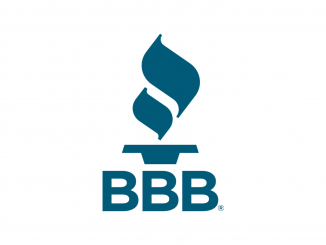
By Kenneth Surbrugg, Director of the Center for Entrepreneurship at Missouri Southern State University
“Quality is not an act. It is a habit.” – Aristotle
Quality is hard to articulate; what may be quality to one person may not be of the same measure of quality to another. Quality is a word that can have so many different meanings that in some respects, in my opinion, the word quality has lost its meaning over the years. Cousin Eddie from Christmas Vacation may have been right in saying that the burnt chair is a good quality item, but others may not agree. Quality in furniture, watches, wine or food vary from person to person.
But what about a business? What makes a quality business? Of course, a multi-million-dollar marketing budget with celebrity endorsements and billions of dollars in annual revenues is one measure. But what about your local businesses? How can someone measure quality in a way that has some universal understanding and meaning?
Enter the Quality Indicator Checklist developed by the National Development Council (NDC). The Quality Indicator Checklist examines a business’ balance sheet and income statement to determine the quality of a business. It is not a hard checklist, but it takes some understanding of your financial statements to complete.
The Quality Indicator Checklist starts by examining five areas of a company’s balance sheet.
- Does the company collect its accounts receivable? If you give customers terms, are you collecting in a timely manner, or are you letting receivables go longer than your agreed upon terms. In other words, if you give customers 30 days to pay, do you collect in about 30 days, or is it more like 60 days?
- Does the company pay its accounts payable? If you receive terms of 30 days to pay a bill, do you pay within terms or are you stretching it out past 30 days?
- Does the company control inventory? How accurate is the inventory? Is it aged? Is it sellable?
- Are the officers of the company committed to the success of the firm? Is the debt to equity ratio reasonable? Is there a positive equity balance on the balance sheet?
- Does the company have a profitable operating history? Are retained earnings positive?
Next, the Quality Indicator Checklist examines five areas of a company’s income statement.
- Is the company growing? Are sales rising?
- Does the company maintain margins? Is the cost of goods sold divided by sales stable over time?
- Does the company control overhead? Are the operating expenses of the firm, when divided by sales, stable or falling? Is the office compensation reasonable?
- Is the company profitable? Are operating profits, when divided by sales, stable or rising?
- Does the company have any “hidden” cash flow? Are there any discretionary expenses available to repay debt? How much is the company writing off on depreciation?
Answers to these ten questions are either good, bad, or neutral. We may differ on the degree of each, but these ten questions can help determine the quality of the business operations and areas to look at for future improvement.
Years ago, a colleague of mine in another state told the story of doing this Quality Indicator Checklist with one of her clients. The business was keeping busy – employees were out on calls all the time. However, cash flow was shrinking and there was a real sense from the owners that either the doors were going to close, or there were going to be layoffs. They could not pay their bills. But they were busy. Phones were ringing and emails were flooding their inbox. What was happening?
After running this Quality Indicator Checklist, they uncovered the following:
- Accounts receivable were not being collected. Invoices were being sent, but nobody was following up on these past due accounts receivable. They discovered that they were about six months behind in collecting cash from their customers. And over 90% of this company’s sales were done on account.
- The company was falling behind on paying accounts payable due to the shortage in cash – directly attributed from the failure to collect on accounts receivable.
- Inventory was not a major problem. They did not stock much inventory and could obtain what they needed locally. But that was becoming an issue because they could not pay their vendors. Vendors started to demand cash on delivery. This further hurt cash flow.
- Officers were committed to the point that one of the owners came really close to having a heart attack over the state of the business. The owners were forced to inject cash multiple times into the company to pay wages. That can only be sustained for so long.
- Sales were growing but cash was not.
- Margins were beginning to compress because they could not buy inventory on discount. Again, this was hurting their cash flow.
- The company quit buying lunches and the owners took a pay cut just to keep the business operating.
- Profits were looking good, but where was the cash?
After running this analysis, the owners realized that they had a quality company, but just ran into a tough time in business operations. One of the owners decided to dedicate four hours a day to contacting customers about past due invoices. Once payments starting coming in, accounts payable got caught up and the owners began to receive a paycheck. Employee lunches were reinstated and the company got back on its feet. However, those few months of stress and anxiety could have been prevented with proper planning and a realization of how important cash flow is to the company.
If you are wondering how your company is doing, or if you are in the market to either buy or sell a business, run the company’s financials through this checklist to see if you have a good quality business. Cousin Eddie would be proud!








Be the first to comment